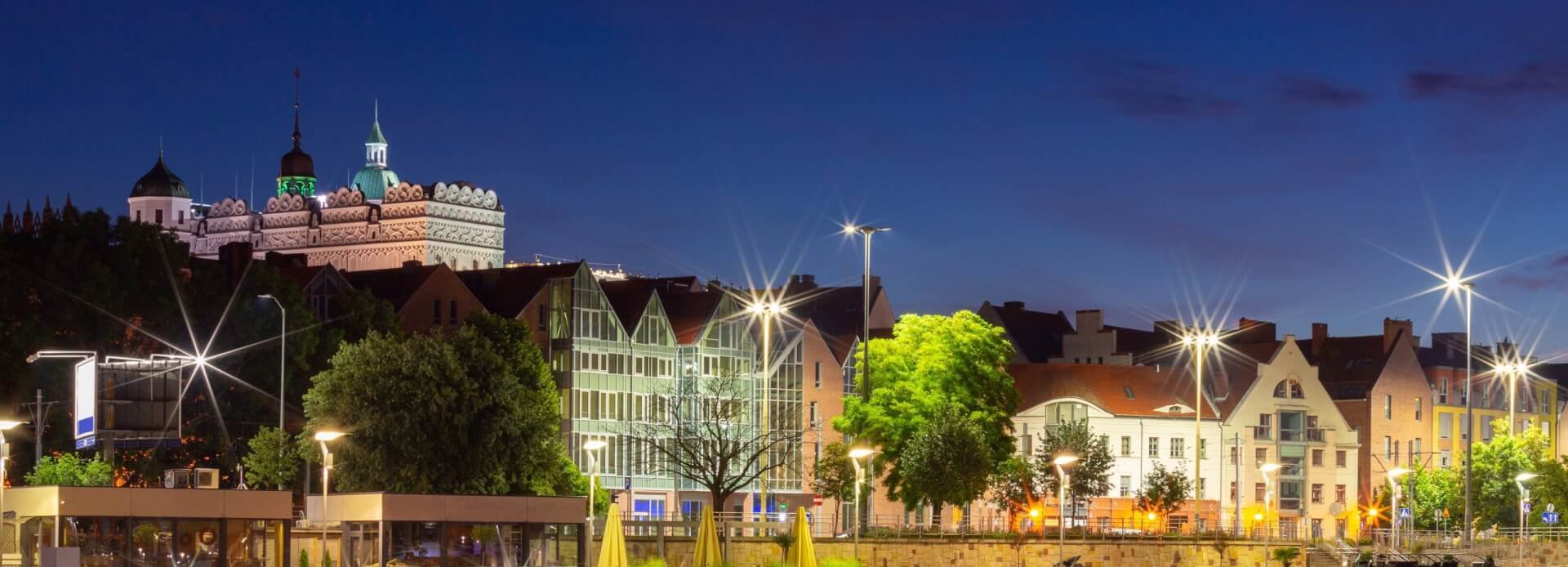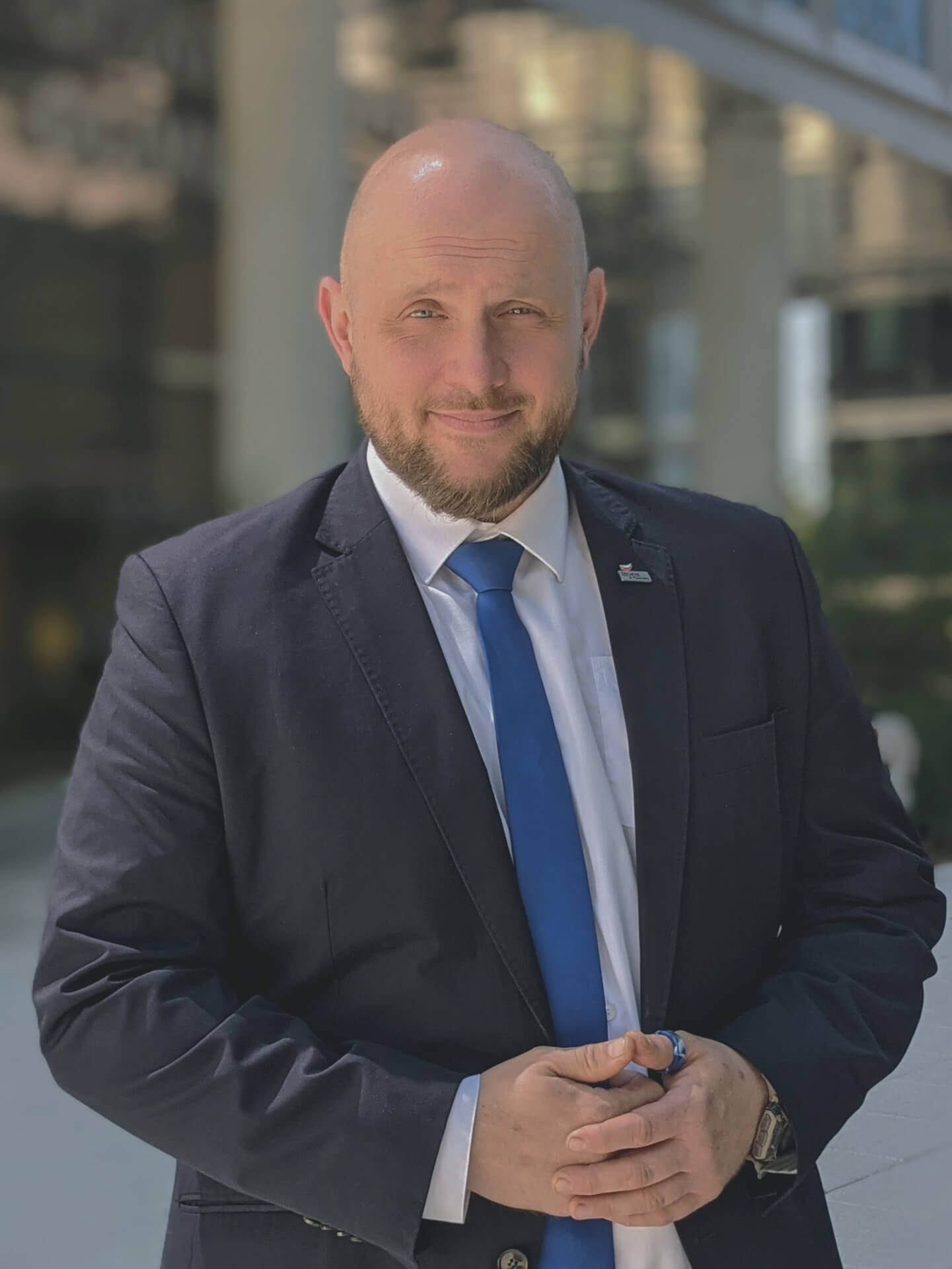
May 6 2024
- Article
- Szczecin
Report
Table of contentsShow
Services, industry and construction are the driving forces of the Pomeranian economy, and the two dynamically developing ports of Gdynia and Gdańsk support the development of trade. The Tri-City boasts the highest concentration of economic activity. Gdańsk alone is home to 486,345 people.
The Tri-City is one of the five most attractive areas for foreign investors in Poland. By the end of 2022, the number of economic operators have reached 91,445 thousand . For years, the potential of the Tricity has been based on its strategic coastal location at the crossroads of two trans-European transport corridors and its access to a large and diverse talent pool. The location has shaped the city's economic identity - the extensive maritime sector, along the ports, has been an integral part of Pomerania's economic development for years.
The metropolis has been ranked high in ratings for years - in 2022, Tri-City took 1st place as the most dynamically developing city in Poland (CEE Shared Services and Outsourcing Awards), it was also the star of Outsourcing Stars 2021, 2022 in the City category, i.e. it took 1st place as the fastest growing city in the BSS sector in Poland, and in 2020 and 2022 it was ranked as the best place to do business in Poland in the ABSL ranking.

Deputy Director, Invest in Pomerania
As the largest metropolitan area in northern Poland, the Tri-City is an extremely attractive place to develop business activities. Business growth is strongly supported by the well-developed transport infrastructure, which was rated very highly by respondents.
Gdańsk-Rębiechowo Airport is the third largest airport in the country, with one of the largest route networks in Poland. In 2022, it handled almost 1.9 million passengers. In the first six months of 2022, almost 376 per cent more passengers passed through Gdańsk Airport than in the same period in 2021.
Another advantage is the direct access to Poland’s largest seaport, which makes the Tri-City particularly outstanding compared to other urban centres in Poland. The infrastructure of the Tri-City is one of the most important factors in the business decisions of companies, both those already located here and those considering entering the market. All business districts are perfectly connected by public transport: rail, bus and tram.
Residents also have access to an ever-expanding cycling infrastructure. This is crucial for employees who value speed and ease of commuting.

Associate, Regional Head – North Region Poland, Office Department
The Tri-City has been developing in terms of major infrastructure projects for many years. Since last year alone, investments have been started or continued here, creating an exceptional business climate. One example is the Port of Gdańsk, which is flourishing as a result of systematic modernisation. At the beginning of this year, it entered the top ten of the largest ports in Europe, and is now already the eighth largest of its kind on the Old Continent. In the first half of this year alone, almost 2,000 ships called at the port, which handled 36% more tonnes of cargo than in the same period last year. These excellent results are the result of, among other things, modernisation work carried out in 2022 on 5 km of quay and 7 km of fairway, the expansion of the Baltic Hub container terminal in Gdańsk and Naftoport.
The opening of the city bypass is planned for mid-2025. Its construction is a huge undertaking aimed at improving the flow and comfort of road traffic around the Tri-City. The new project will primarily relieve congestion on the existing ring road, as well as on the A1, S7 and the Kashubian Route (part of the S6). The areas adjacent to these routes are already of interest to residents, investors and logistics companies.
In turn, one of the most important road investments in Pomerania, the Kashubian Route, will be completed in 2022. This 42-kilometre section of the S6 expressway will save drivers up to an hour’s journey between the Tri-City and Słupsk. Eventually, the S6 will connect the Tri-City with Szczecin, and the entire route is expected to be completed by mid-2025.
One of the projects that Tri-City residents should be particularly excited about is the return of the MEVO electric city bike system. It is currently being tested and will eventually provide more than 3,000 bicycles to residents of the Tri-City and neighbouring municipalities. This will change the face of individual transport in Gdańsk, Sopot and Gdynia, especially as the agglomeration has one of the best developed networks of cycle paths in the country.

Associate, Regional Head – North Region Poland, Office Department

Junior Negotiator, Regional Cities – Tricity, Office Department, Cushman & Wakefield
The Tri-City remains the third largest regional market in terms of office space stock, which at the end of June was more than 1.02 million sqm in Gdańsk, Sopot and Gdynia combined. In the first half of the year, the volume of completed projects was relatively small, amounting to only 6.8 thousand sqm. The volume of office space under construction is also relatively low. It is estimated at around 53.5 thousand sqm, compared with 150-200 thousand sqm before the pandemic.
However, tenants are very active in the Tricity office market. Despite rising rental rates, the transaction volume reached almost 69 thousand sqm, more than 30% higher than the same period last year. The growing interest of tenants in office space, combined with a decline in the volume of investments under construction, may lead to a supply gap effect in the market in the near future, which in turn will mean a further increase in base rental rates and a significant reduction in the incentives offered by developers.
However, despite the reduction in new supply, tenants’ demand for office space is not diminishing. Sustainability, ESG and well-being factors play an important role. Meeting tenants’ expectations is undoubtedly helped by the Tri-City’s unwavering perception as an attractive place to live and do business, reflected in the fact that it has the highest overall rating for office space of any city.

Junior Negotiator, Regional Cities – Tricity, Office Department, Cushman & Wakefield
In the Pomeranian Province, the services provided by local institutions largely meet the needs of companies. For example, Invest in Pomerania provides assistance in contacting local authorities, potential business partners from the region or organising a visit to the region.
During the investment process, companies can count on the assistance of the investor’s spokesperson in obtaining the necessary permits and other administrative actions, or in providing temporary office space during the investment incubation period. They also provide post-investment support to investors in terms of business development, match-making and integration into the local business community. In addition, entrepreneurs in the Tri-City can count on support from, among others, the Pomerania Special Economic Zone, Pomerania Regional Chamber of Commerce, Italian Chamber of Commerce and Industry, PAIH and Pomerania Development Agency.
Gdansk, Gdynia and Sopot are an academic agglomeration with enormous potential, offering a wide range of top quality education. Eight public universities and no fewer than fourteen private colleges, including Europe’s largest state maritime college, guarantee a comprehensive range of skills.
In total, more than 70,000 students study in the Tri-City. Some of the most popular universities are University of Gdańsk, Maritime University of Gdynia, Bohaterów Westerplatte Naval Academy and Gdańsk Medical University.

Team Leader, IT Services Antal
The Tri-City, with its green spaces, access to the Baltic Sea, rich cultural programme, numerous restaurants and entertainment venues, attracts students not only from all over Poland, but also from various destinations around the world, creating a diverse and open-minded academic environment. There are 22 higher education institutions in the Tri-City area, two of which made it into the top ten in this year’s ranking of academic institutions – Gdańsk University of Technology (6th place) and Gdańsk Medical University (9th place). Cultural diversity and the variety of fields of study undoubtedly promote the exchange of knowledge and experience, while modern campuses, libraries and laboratories support effective learning and research.
Collaboration between universities and business is key – the Tri-City universities are constantly adapting their programmes to the needs of the labour market, and organised work placements and internships allow students to gain practical experience and contacts in the business world. In addition, the universities conduct innovative research, often in collaboration with local businesses, which contributes to the technological and economic development of the region. It is a place full of opportunities for scientific and professional development, making full use of its potential for the development and investment attractiveness of the region.

Team Leader, IT Services Antal
The Tri-City’s strengths are in administration and human resources, as well as sales and analytical skills. This is a particular advantage for shared service centres focused on finance and accounting and customer service. An additional benefit is the availability of linguistic specialists, which makes it possible to effectively employ people to support business processes in different languages. From the perspective of manufacturing companies, access to both engineers and lower level production workers is extremely important and is also rated relatively highly.
The Tri-City is a location that is growing in importance every year and attracting interest from foreign investors. There are more than 184 business service centres in the Tri-City, which will employ nearly 34 thousand people in 2022.

Team Leader, SSC/BPO Antal
The Tri-City’s employment potential is growing year on year, and the Tri-City itself is gaining in importance as a place that foreign companies are increasingly considering for new investments. According to Antal’s survey, the employment potential index has increased since the previous survey in 2021, when it stood at 7.1, confirming the dynamic changes taking place in the Tricity market and its continuous development.
The highest availability rates were recorded among professionals employed in industry, trade, transport and storage, and construction. This is confirmed by the investments that are being made in Pomerania – logistics and warehousing parks or production plants – investors are keen to set up new operations in the Tri-City and its environs because of the availability of talent. The region also offers employers and investors access to candidates who speak foreign languages, which is reflected in the developing SSC/BPO sector. The IT sector is the most dynamic in the Tri-City market (48% of respondents plan to increase employment), followed by sales (34%), customer service (30%) and data analysts (26%).
The fact that the Tri-City is also an attractive place to relocate is undoubtedly contributing to the growth of the Tri-City’s employment potential – skilled workers are keen to move to Pomerania to fill local skills gaps.

Team Leader, SSC/BPO Antal
The Tri-City is a region of great economic potential. The Pomeranian Province is one of the fastest growing regions in Poland, as evidenced by its dynamic GDP growth. In the fDi 2022 ranking, Gdańsk was ranked eighth among medium-sized European cities in terms of business friendliness.
The Tri-City is a centre of industry, services and construction, which is the driving force of the local economy. In addition, the developing ports of Gdynia and Gdańsk support the dynamic development of trade.
The region has many strengths, such as its strategic location on the Baltic Sea at the heart of Europe, a diversified and diverse economy, a skilled workforce, advanced research and development facilities and an investment-friendly, pro-development policy. Tri-City is a place that attracts entrepreneurs with an attractive investment environment.

Managing Director, Scandinavian-Polish Chamber of Commerce
Both the Tri-City metropolitan area and the entire Pomerania region are and will continue to be attractive to Scandinavian investors. Its coastal location, proximity to nature or even the purity of the air make the region a good place to live. These factors help to ensure the well-being and work-life balance that is so important in Scandinavian organisations, and thus attract the right talent. A very important factor is the development prospects associated with green transformation. A good example of this is the Norwegian company Equinor’s investment in the construction of wind farms on the Baltic Sea, a service port in Łeba or a photovoltaic farm in the municipality of Zagórzyca. It is important to note that the development of this industry brings with it entirely new career prospects.
The business services sector is also flourishing. Recent investments – the opening of a financial services centre by Danish ISS Group, a supply chain support centre by Finnish Metsä Group or Swedish Northvolt, which recently started production of energy storage systems at its factory in Gdańsk – are just a few examples of the region’s attractiveness to Scandinavian investors.

Managing Director, Scandinavian-Polish Chamber of Commerce

Head of Sales and Marketing, Speednet
In recent years, Gdańsk has become known on the European map as a dynamically developing centre for the IT industry. There are many factors that make it an ideal location for local and global technology companies. In my opinion, these are the three most important:
Many Polish and foreign organisations already include Gdańsk in their development strategy. I believe that in the near future we will see a further increase in the importance of Gdańsk, especially in the context of the technology sector.

Head of Sales and Marketing, Speednet
SSC/BPO
INDUSTRIAL PRODUCTION
BANKING
Gdańsk, Sopot and Gdynia form a unique urban ecosystem in Poland, collectively known as the Tri-City. The agglomeration has a work-life balance potential that is unparalleled on a national scale. It is the only place in Poland with extensive office infrastructure, direct access to the sea (Gulf of Gdańsk), forests and even hills. It is here that the working environment naturally blends with the infrastructure that influences leisure activities, and this in different ways. In 2021, the area of parks, green spaces and residential green spaces in Gdańsk will be 924.5 ha.
Economic development and the fact that the Tri-City has always been friendly to people mean that more and more people are choosing the Pomeranian metropolis as a place to live. They are attracted by the diverse labour market, which offers a wide range of career opportunities, the high quality of life, the rich cultural life and, above all, the clean air and natural environment.
Tri-city in numbers
Thank you for your interest. You can also use our data comparison engine or download the report as a PDF.

Find out more about the labour market and the potential of Polish cities.
Visit our blogTo view reports you must leave your email address
Expert commentary
Throughout 2022, IT companies accounted for the lion's share of BSS investors emerging or reinvesting in the Tricity, while since the autumn they have been joined by advanced shared service centres and financial and customer experience service providers. Employers in the sector are now putting a lot of effort into getting the balance right in hybrid working models, which has a direct impact on the efficiency of teams and their stability, i.e. calming turnover.
The biggest change in the spectrum of investment projects so far is the emergence of a large group of engineering projects at the intersection of high manufacturing and IT, such as Siemiens Gamesa, ThyssenKrupp or Archer, most of which have decided to set up teams in the Tri-City to increase their creative and innovative potential.
Another major factor of change is that much of Poland's energy production and supply is beginning to shift from the south to the coast, with the construction of a new floating jetty, transmission line and LNG storage facilities, as well as the planned construction of a nuclear power plant and a number of offshore wind farms. The whole premise will require a dynamic expansion of the technological infrastructure and will certainly entail the creation/expansion of many teams and companies in the short and long term.